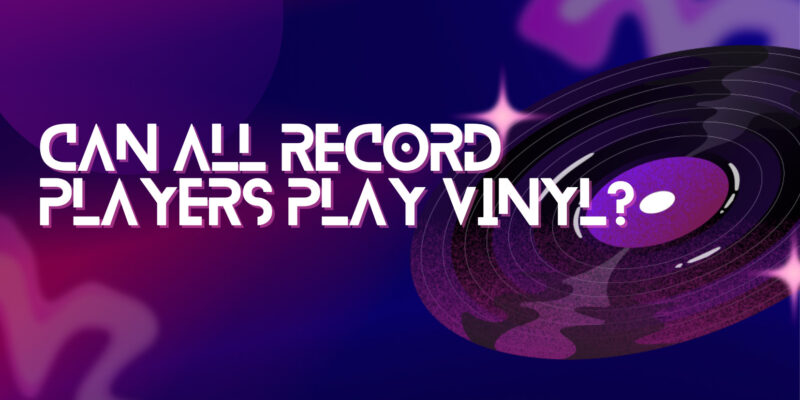Record players, also known as turntables or phonographs, have been a staple of audio playback for generations. While they are primarily designed for playing vinyl records, not all record players are created equal, and their compatibility with different types of vinyl records can vary. In this article, we will explore the factors that determine whether a record player can play vinyl and what to consider when selecting a turntable.
- Types of Vinyl Records
Vinyl records come in different formats and sizes, each with its own playback requirements. The three primary types of vinyl records are:
- LP (Long Play) Records: These 12-inch discs typically play at speeds of 33 1/3 revolutions per minute (RPM) and contain full-length albums.
- Single Records: Also known as 7-inch or 45 RPM records, these smaller discs typically contain one to two songs on each side.
- 78 RPM Records: Vintage 10-inch records that play at 78 RPM, often featuring older or historic recordings.
- Turntable Speeds
One of the most critical factors in vinyl compatibility is the turntable’s ability to play records at different speeds. Most modern turntables are equipped to handle 33 1/3 RPM and 45 RPM records, which cover the standard LP and single formats. However, 78 RPM records require a specialized turntable with the appropriate speed setting.
- Cartridge and Stylus
The cartridge and stylus (needle) are essential components responsible for tracking the grooves of vinyl records and translating the mechanical vibrations into electrical signals. Some turntables come with cartridges that are designed specifically for either LPs or 45s, while others may have interchangeable cartridges that allow you to switch between the two formats. To play 78 RPM records, you’ll need a specialized cartridge with a stylus designed for the wider grooves of these vintage records.
- Tonearm Adjustments
The tonearm, which holds the cartridge and stylus, must be properly adjusted to ensure accurate tracking and minimal wear on the records. Different types of records may require adjustments in tracking force, anti-skate, and tonearm height. Modern turntables often feature adjustable tonearms to accommodate various vinyl formats.
- Compatibility with Vintage Records
If you plan to play vintage or older vinyl records, it’s essential to consider their condition. Vintage records may have worn or damaged grooves, which can be exacerbated by heavy tracking force or a poorly aligned stylus. It’s advisable to use a turntable with adjustable settings and a gentle stylus when playing older records to minimize wear and maintain sound quality.
- Specialized Features
Some high-end turntables offer additional features to enhance compatibility and playback quality. These features may include variable speed control for precise RPM adjustment or automatic tonearm mechanisms that can switch between different record sizes and formats with ease.
Conclusion
While many modern record players are versatile enough to handle standard LPs and single records, not all turntables are suitable for playing 78 RPM records or vintage vinyl. When selecting a turntable, it’s crucial to consider the types of records you intend to play and ensure that the turntable is equipped with the necessary features and adjustments to accommodate them.
Ultimately, the compatibility of a record player with vinyl records depends on its design, features, and settings. By choosing a turntable that suits your specific vinyl collection and needs, you can enjoy the rich and timeless experience of analog music playback.


